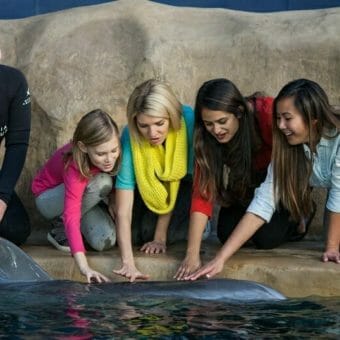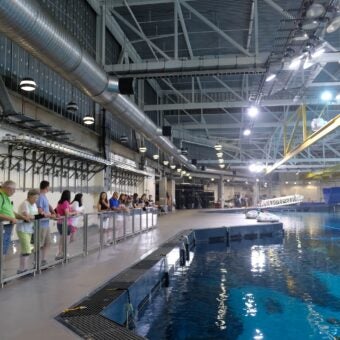-
Size
6-14 inches (15-36 cm) -
Diet
Mussels, clams, snails, barnacles and sea urchins -
Range
Eastern Pacific Ocean -
Habitat
Intertidal communities
Physical Characteristics
- Measures 6-14 inches (15-36 cm) across.
- Color ranges between brown, yellow, purple, orange and red.
- Five stout arms, which are dotted with rough-feeling, small, white, blunt spines that form lined patterns. Spines are actually microscopic pinchers that remove any larva, algae or other growth that may settle on the sea star’s skin.
- The bottom of each arm is covered with thousands of tiny tube feet tipped in suction cups.
- The mouth is on the underside of the body in the middle of the central disk.
Animal Fun Fact
The mouth of the ochre sea star is on the underside of the body in the middle of the central disk.
Diet / Feeding
- Diet consists of mussels, clams, snails, barnacles and sea urchins. Will consume dead animal and plant material.
- Grips the outside shell of its prey with tube feet and slowly pulls it open. Then extrudes its stomach and lays the stomach on the soft tissue of the prey. Digestive juices from the stomach dissolve tissue and the stomach absorbs dissolved material.
- Full digestion takes two to three days.
Range / Habitat
- Occurs along the coast of the Eastern Pacific from Alaska to Baja, California.
- Found in intertidal communities on the Pacific Coast of the United States.
Reproduction & Growth
- Reproduces through spawning.
- The larva attaches itself to the substrate as it settles.
Conservation Status
- “Not Evaluated” on the IUCN Red List.
Additional Information
- Common residents of tide pools on the United States West Coast. Easy to spot as they are large and colorful.
- Keystone species in the rocky marine intertidal communities off the northwest coast of North America. This predatory starfish feeds on the mussel Mytilus californianus and is responsible for maintaining much of the local diversity of species within certain communities.
- Can regrow a lost arm. Regeneration can take up to a year, depending on food supply, water temperature and other factors.
- Can be exposed to the air for up to 50 hours if remains in the shade or buried in moist algae.
- Small, light-sensitive spots at the tips of its arms help locate darkened areas where it can seek shelter.
- Also called “common Pacific sea star.”







